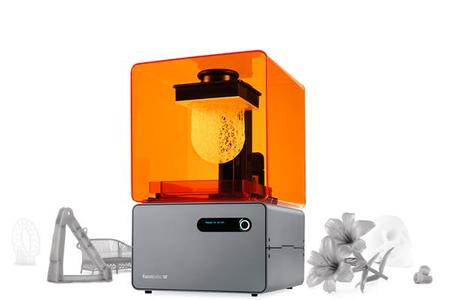Ultrasound is more than sound. Obstetricians use it to peer inside a woman’s uterus and observe a growing baby. Surgeons use powerful beams of ultrasound to destroy cancer cells. Researchers fire ultrasound into materials to test their properties. But these high-frequency acoustic waves can do even more.
Researchers have now 3-D printed a new kind of device that can harness high-pressure ultrasound to move, manipulate, or destroy tiny objects like particles, drops or biological tissue at scales comparable with cells. By providing unprecedented control of photoacoustic waves — which are generated by lasers — such a device can be helpful for performing precise surgery, analyzing the properties of materials, and for scientific research in the lab, such as in the field of microfluidics.
“The advantage of acoustics is that it’s noninvasive,” said Claus-Dieter Ohl at Nanyang Technological University in Singapore. His team describes their new device this week in Applied Physics Letters, from AIP Publishing. “We have much better control of the photoacoustic wave, and the wave can be even designed such that it serves the purpose of a mechanical actuator.”
This control is crucial. Previous devices could only produce basic kinds of acoustic waves: planar waves, which focus to a single point like the way a magnifying glass focuses light waves.
These devices, called laser-generated focused ultrasound transducers, work by converting laser pulses into vibrations. The key part of the transducer is a glass surface that acts like a lens. Laser pulses hit the glass surface, which is coated in a thin film of carbon nanotubes. The heat causes this coating to expand rapidly, which generates the vibrations needed to produce high-frequency and high-pressure acoustic waves.
But because the substrate material is glass, it’s limited to planar, cylindrical or spherical shapes. More complicated shapes are difficult and expensive to make out of glass.
The new type of transducer also produces acoustic waves with high-frequency laser pulses. But instead of glass, the researchers used 3-D printers to make a lens out of clear liquid resin. By using a 3-D printer, they could create a lens of any shape, which allows them to generate acoustic waves of any shape. As a result, the researchers can focus the waves at multiple points at the same time or they can control the phase of the waves and focus the waves on different points at various times.
According to the researchers, the combination of ultra-cheap production and a higher level of control over the ultrasound makes the 3D printed device an exciting proposition for the scientific community. With a focus precision in the hundreds of microns, the device could be used in material analysis and surgery, helping doctors better attack tumors. The researchers believe that the device could be particularly useful in cataract surgery.
To make their transducer work, the researchers developed a new method to coat the clear resin by painting layers of polymer and carbon nanotubes at room temperature. Conventional methods like vapor deposition require high temperatures that would have melted the cured resin. Their proof-of-concept transducer generates a planar and focused wave at the same time, and it performed as well as a glass one. About two square centimeters in size, it costs only about two dollars to print.
What sets this approach apart is better control combined with simpler and cheaper production. “It allows you to use acoustics for new applications,” Ohl said. The precision of the focus — down to hundreds of microns — opens up applications in material analysis and surgery. This device could help doctors better attack tumors. In particular, Ohl envisions this device could help eye surgeons conduct cataract surgery . Biomedical researchers can use acoustic waves to measure the elastic properties of cells in a petri dish, seeing how they respond to forces.
By focusing waves at different points and times, the device can exert shear forces and sort, isolate, and manipulate droplets, particles, or biological cells. It would be a powerful tool in microfluidics, for example, which requires strong, precise, and fast control of liquids. To that end, the researchers are now using 3-D-printed photoacoustic transducers to make actuators.
Source: American Institute of Physics (AIP)









